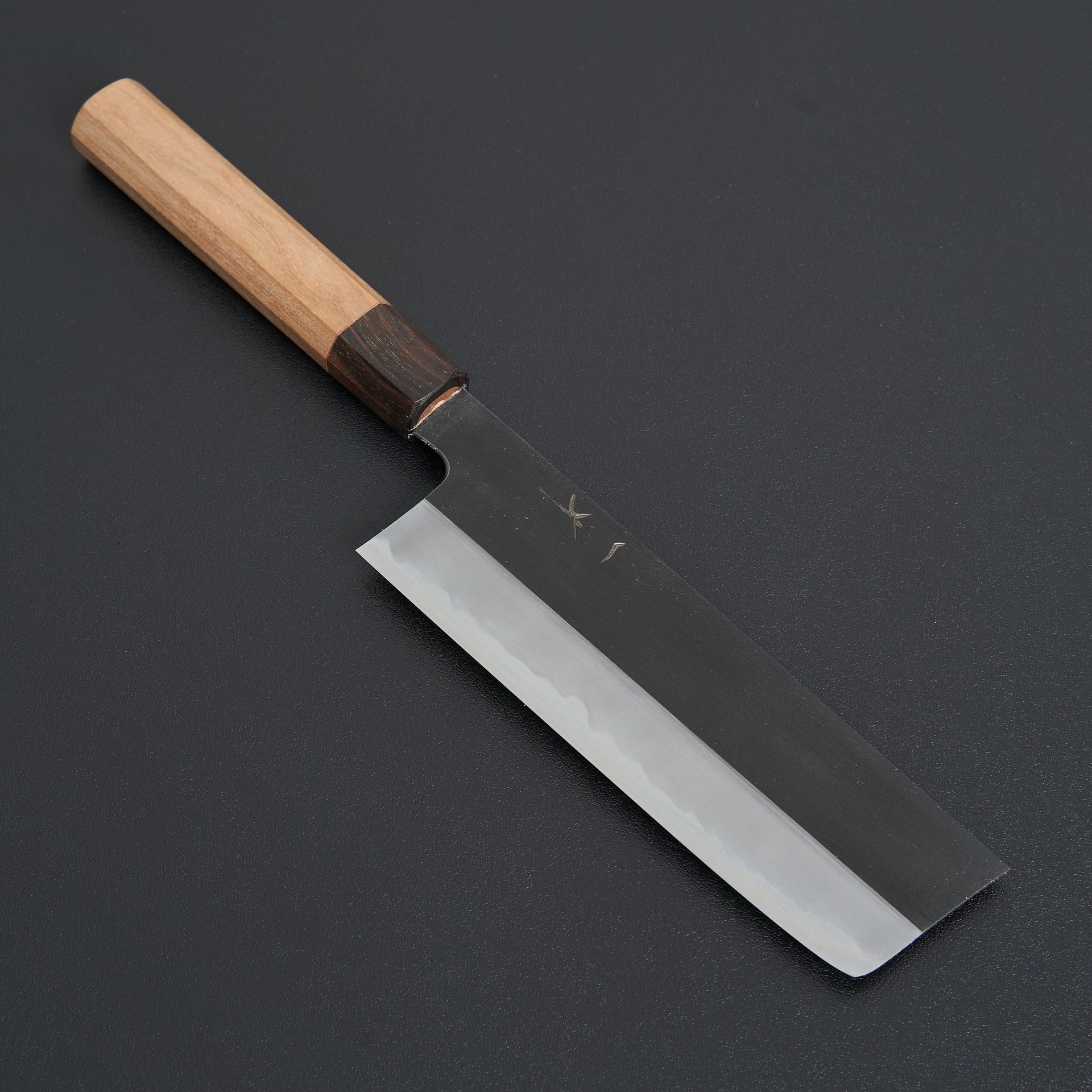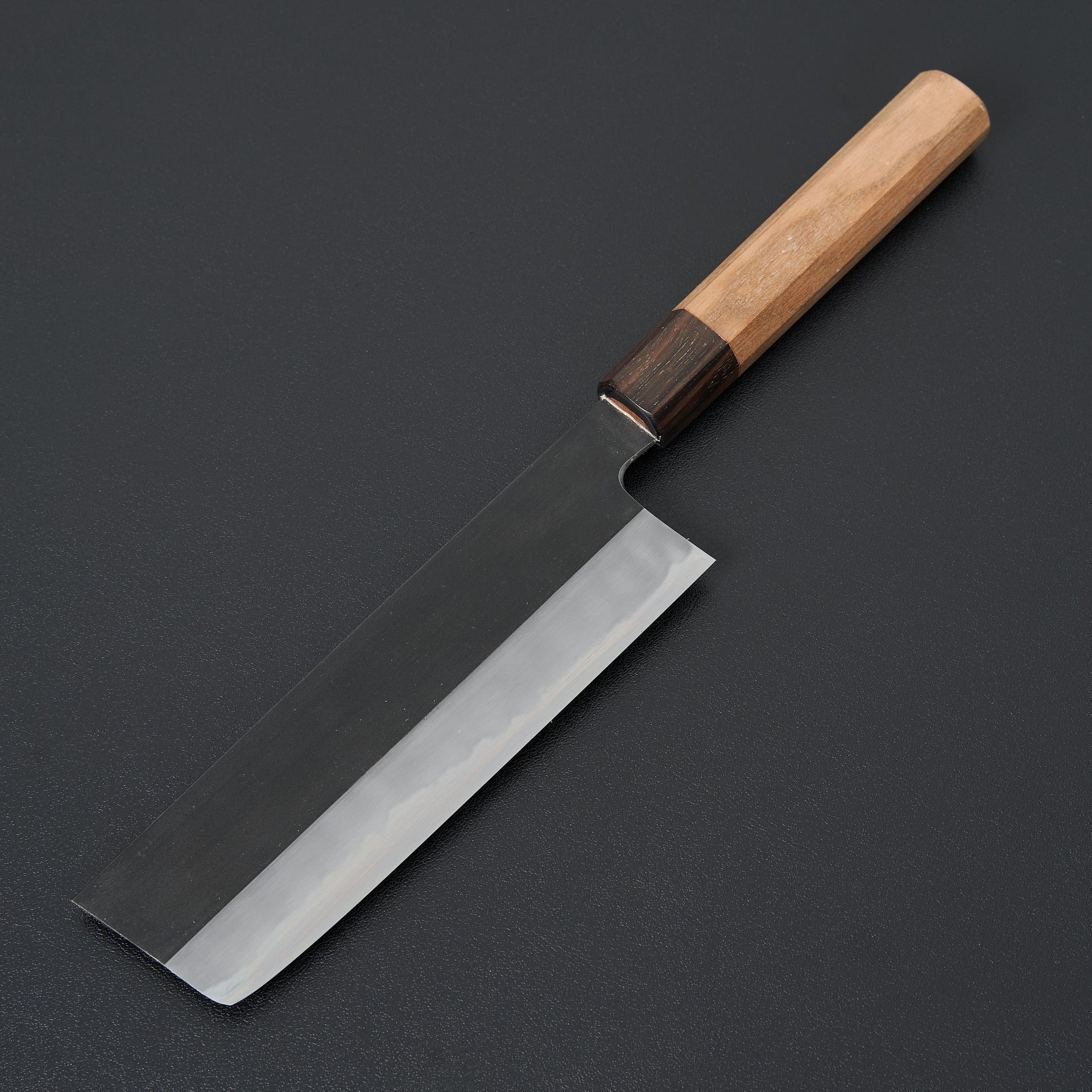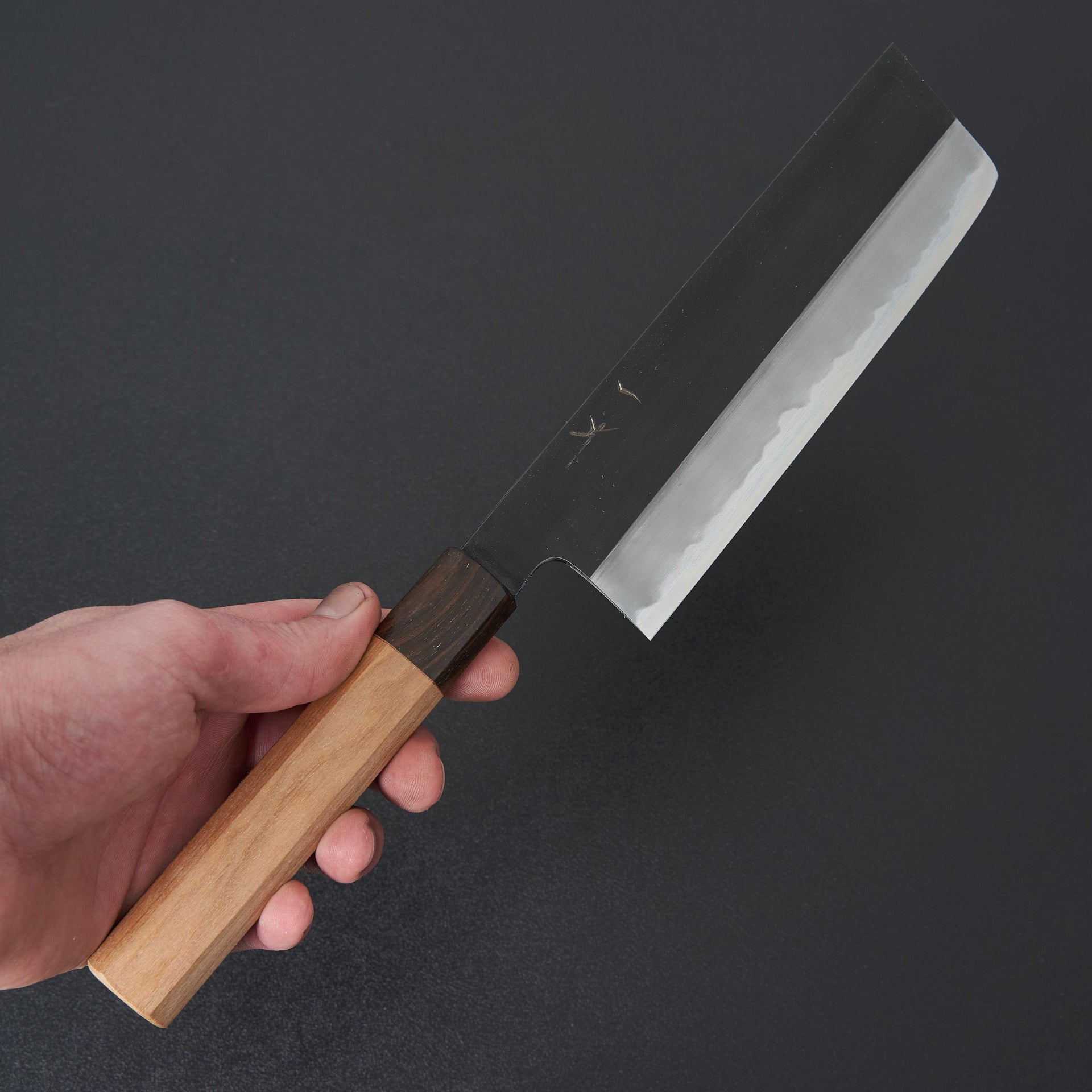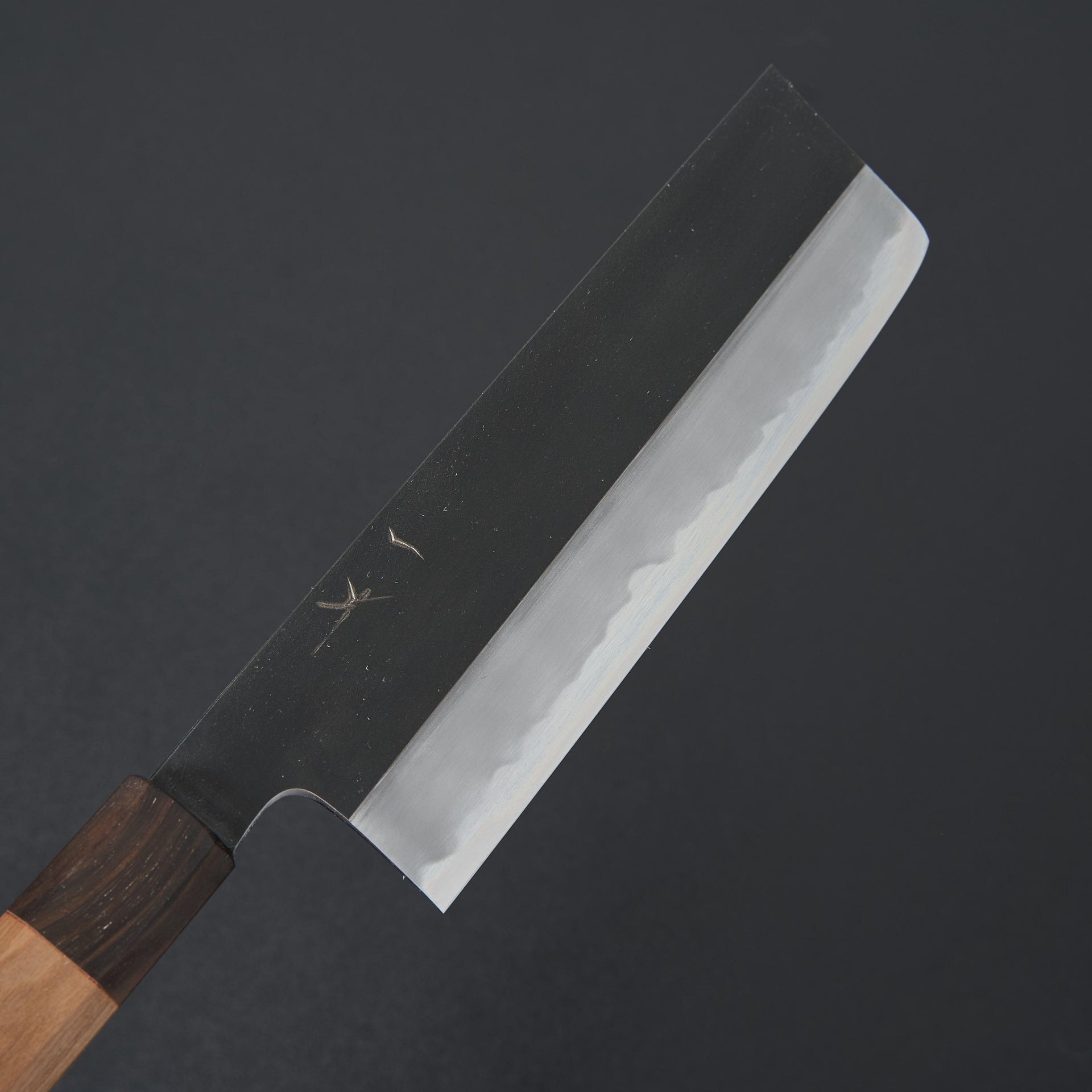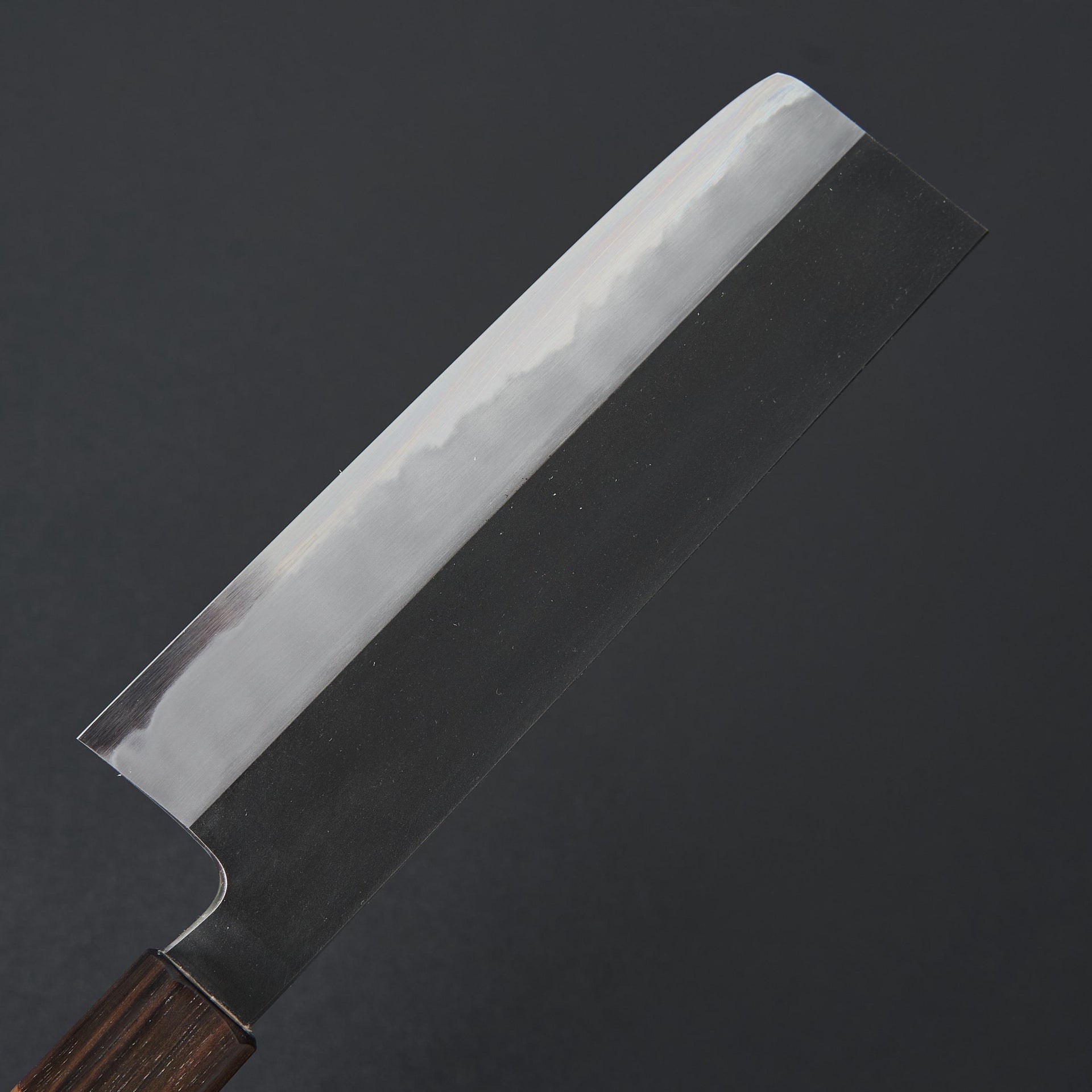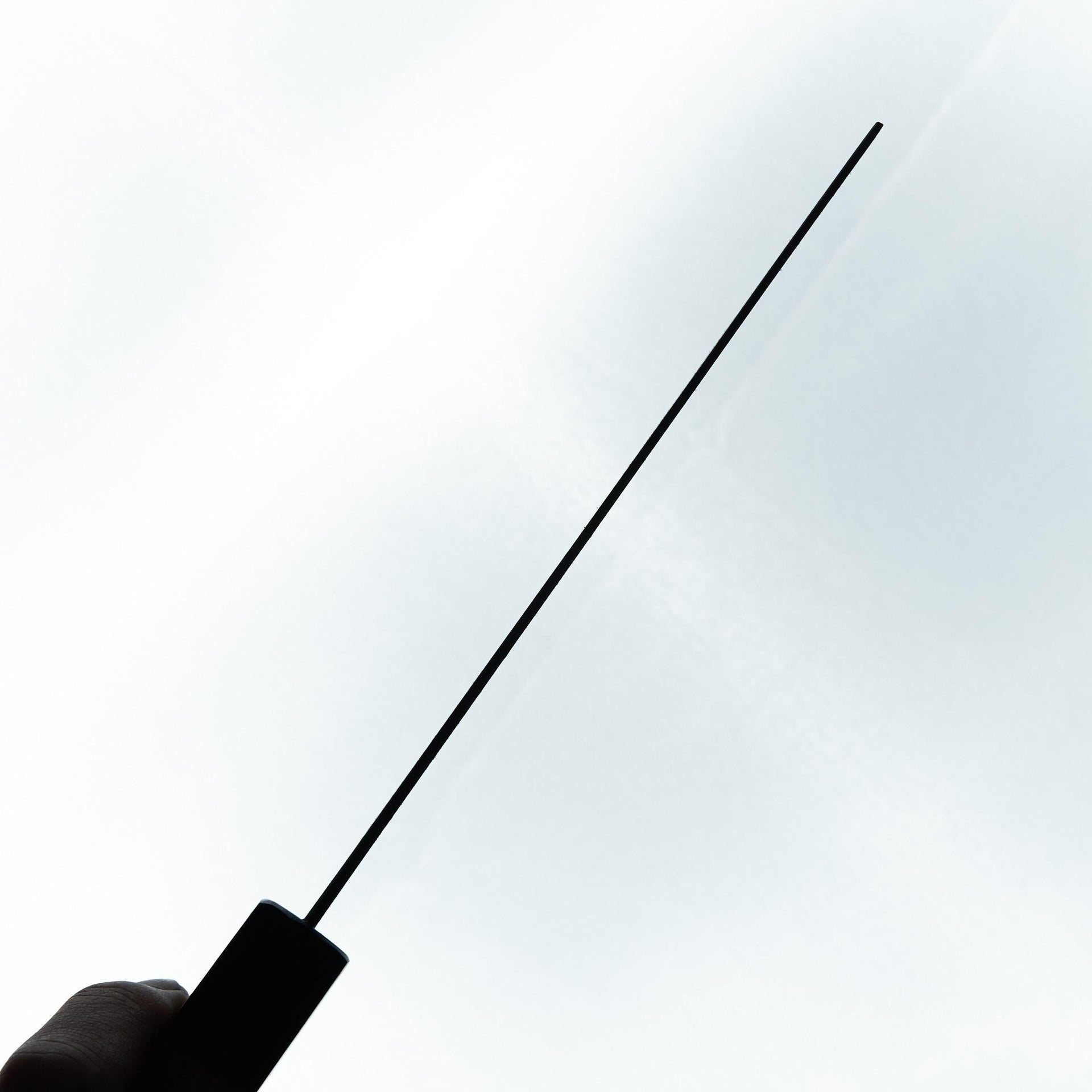Hitohira Kikuchiyo Kyuzo White#2 Kurouchi Nakiri 180mm Cherry Wood
Smith: Kikuchiyo 菊千代
Producing Area: Sakai-Osaka/ Japan
Profile: Nakiri
Size: 180mm
Steel Type: Carbon Steel
Steel: Yasuki White (Shirogami) #2, Soft Iron Clad
Handle: Cherry Wood & Ebony Ferrule Octagonal
Total Length: 312mm
Edge Length: 166mm
Handle to Tip Length: 180mm
Blade Height: 55mm
Thickness: 2.3mm
Handle Length: 132mm
Weight: 173g
Hand Orientation: Ambidextrous
Sharpener: Kyuzo
Blacksmith: Kikuchiyo
In the early 2000s, Kikuchiyo was invited by master craftsman of Sakai to join them as a blacksmith. The art of blacksmithing is physical, the rough working environment of fire and iron takes a toll on the body and many of the masters' abilities begin to wane in their forties and fifties. As Kikuchiyo started earlier in life, he has gained most of the knowledge and skill of fine forging and quenching, before his physical abilities deteriorate.
Kikuchiyo proactively experimented with new steels not generally used by Sakai’s blacksmith, steels such as stainless. His experience and skill have made his Ginsan (Silver 3) knives popular among Japanese cuisine chef’s, many stating “If you use Kikuchiyo’s Ginsan once, you will never replace it”.
Kikuchiyo is also known for fine Honyaki quenching, beautiful Hamon and the correct hardness and gumminess are only achievable by experienced masters achieving the correct temperature. His Honyaki is supported by many of Sakai’s sharpeners and finishers, professionals who know what makes a good kitchen knife.
When Kikuchiyo joined as a blacksmith, he dreamed of success and becoming a great man. He continues to develop his skills as a craftsman, modelling each of his knives on the image of his master’s forge.
Sharpener: Kyuzo
Kyuzo’s father Heihachi is one of the busiest sharpeners in Sakai. Heihachi’s workshop room and corridor were always filled with knives waiting to be sharpened. Although Kyuzo initially worked under his father to learn the foundation of rough sharpening, eventually he became a student of Kambei, known as one of the best sharpeners in Sakai because he knew best how to sharpen wide double bevel knives. After a few years of training, he built his style based on both his father and Kambei’s respective styles. Today, Kyuzo is one of only a few people who can sharpen wide double bevel with really good Shinogi-line in Sakai, one of the most challenging techniques in sharpening.
Message from Craftsman
He uses charcoal to quench when treating the knife, which does not produce a Kurouchi dark finish. So in order to produce the finish, which is both aesthetically pleasing and useful in protecting against rust, sharpener uses a special and secret technique that has been used in Sakai for a long time and etches the surface of the knife.
This way of finishing creates the dark and beautiful Kurouchi finish found on this special line. While both types of Kurouchi finishes can fade over time, the etching technique used by sharpener may fade faster.
This is not signed that anything is wrong with the blade. so please do not worry if this happens, as it is natural.
**Please note that the knife pictured is not always the one you will receive. Due to the handmade nature of these knives, these dimensions may vary slightly. The color and pattern of the knife, handle and ferrule may vary from knife to knife. Please contact us if you have a particular request.

